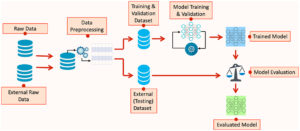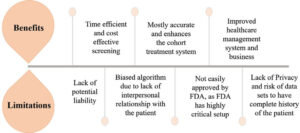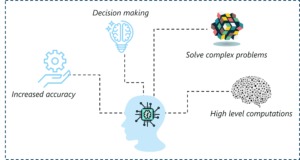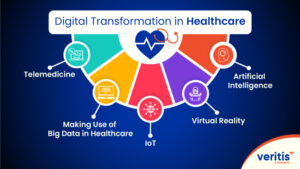The integration of Artificial Intelligence (AI) into healthcare is transforming how medical services are delivered, and one of the most significant areas of impact is on healthcare costs. As AI technologies become increasingly sophisticated and widespread, they offer the potential to revolutionize healthcare by improving efficiency, accuracy, and patient outcomes, all of which have profound implications for healthcare expenditures. This article explores the various ways in which AI is influencing healthcare costs, focusing on cost reduction through improved efficiency, enhanced diagnostic accuracy, better resource management, and the shift towards preventive care.
Cost Reduction through Improved Efficiency
One of the primary ways AI is impacting healthcare costs is through enhanced efficiency in medical operations. Traditional healthcare systems often involve multiple stages and manual processes that can be time-consuming and resource-intensive. AI technologies streamline these processes, leading to significant cost savings. For instance, AI-powered administrative tools can automate tasks such as scheduling, billing, and patient management. This automation reduces the need for manual intervention, minimizes errors, and accelerates workflows. In clinical settings, AI algorithms assist in managing patient data, ensuring that medical records are up-to-date and accurately processed. This efficiency not only reduces administrative costs but also allows healthcare professionals to focus more on direct patient care rather than routine tasks. By improving operational efficiency, AI contributes to overall cost savings within the healthcare system.
Enhanced Diagnostic Accuracy and Reduced Testing Costs
AI’s role in improving diagnostic accuracy has a direct impact on reducing healthcare costs. Accurate diagnoses are crucial for effective treatment and avoiding unnecessary procedures. Traditional diagnostic methods can sometimes result in false positives or false negatives, leading to additional tests, extended treatments, and increased patient costs. AI algorithms, particularly those utilizing machine learning and deep learning, analyze medical data with high precision, reducing the likelihood of diagnostic errors. For example, AI systems in radiology can detect anomalies in medical images with greater accuracy than human radiologists, leading to earlier and more accurate diagnoses. By reducing the need for repeat tests and minimizing diagnostic errors, AI helps in lowering overall healthcare costs. Moreover, accurate diagnoses ensure that patients receive the appropriate treatments, avoiding the costs associated with incorrect or delayed treatments.
Better Resource Management and Utilization
AI also plays a significant role in optimizing resource management and utilization within healthcare systems. Healthcare resources, including medical staff, equipment, and facilities, are often limited and expensive. AI-driven tools assist in managing these resources more effectively, leading to cost savings. For example, AI algorithms can analyze patient data to predict patient flow and optimize staffing levels, ensuring that resources are allocated efficiently. In hospitals, AI systems can manage the use of medical equipment, such as MRI machines or ventilators, by predicting maintenance needs and scheduling usage to avoid downtime. Additionally, AI can help in managing inventory and supply chains, reducing waste and ensuring that essential supplies are available when needed. By improving resource management, AI helps to minimize operational costs and enhance the overall efficiency of healthcare facilities.
Shift Towards Preventive and Predictive Care
AI is also driving a shift towards preventive and predictive care, which has long-term cost implications for the healthcare system. Preventive care aims to identify and address potential health issues before they become severe, thereby reducing the need for expensive treatments and hospitalizations. AI technologies play a crucial role in this approach by analyzing large datasets to identify individuals at risk of developing certain conditions. For instance, AI algorithms can predict the likelihood of chronic diseases such as diabetes or heart disease based on patient data, allowing for early intervention and lifestyle modifications. By focusing on prevention and early detection, AI helps to avoid costly treatments and hospital admissions, leading to significant cost savings. This proactive approach not only benefits individual patients but also contributes to reducing the overall burden on the healthcare system.
Telemedicine and Remote Monitoring
The rise of telemedicine and remote monitoring, facilitated by AI, is another factor influencing healthcare costs. Telemedicine enables patients to consult with healthcare providers remotely, reducing the need for in-person visits and associated travel costs. AI-powered telemedicine platforms offer virtual consultations, diagnostic support, and remote monitoring of patient health, providing a convenient and cost-effective alternative to traditional healthcare services. Remote monitoring tools, such as wearable devices and AI-driven health apps, allow for continuous tracking of patient health metrics, such as heart rate, blood glucose levels, and physical activity. By providing real-time data and enabling remote consultations, AI reduces the need for frequent hospital visits and helps in managing chronic conditions more effectively. This approach not only lowers patient costs but also reduces the strain on healthcare facilities, contributing to overall cost savings.
Challenges and Considerations
While AI holds promise for reducing healthcare costs, there are challenges and considerations that need to be addressed. The initial investment required for AI technologies can be substantial, and integrating these systems into existing healthcare infrastructure can be complex. Additionally, ensuring the accuracy and reliability of AI algorithms is crucial to prevent potential errors that could lead to increased costs or adverse patient outcomes. There is also the need to address data privacy and security concerns, as AI systems rely on vast amounts of patient data. It is essential to strike a balance between leveraging AI for cost savings and maintaining the highest standards of patient care and data protection.
Conclusion
AI is making a significant impact on healthcare costs by enhancing efficiency, improving diagnostic accuracy, optimizing resource management, and promoting preventive care. While the integration of AI into healthcare presents challenges, its potential to reduce costs and improve patient outcomes is considerable. As AI technology continues to evolve, it is likely to play an increasingly central role in shaping the future of healthcare, driving cost savings, and enhancing the overall quality of care. By addressing challenges and leveraging the benefits of AI, the healthcare industry can achieve more sustainable and effective solutions for managing costs and delivering high-quality care.





